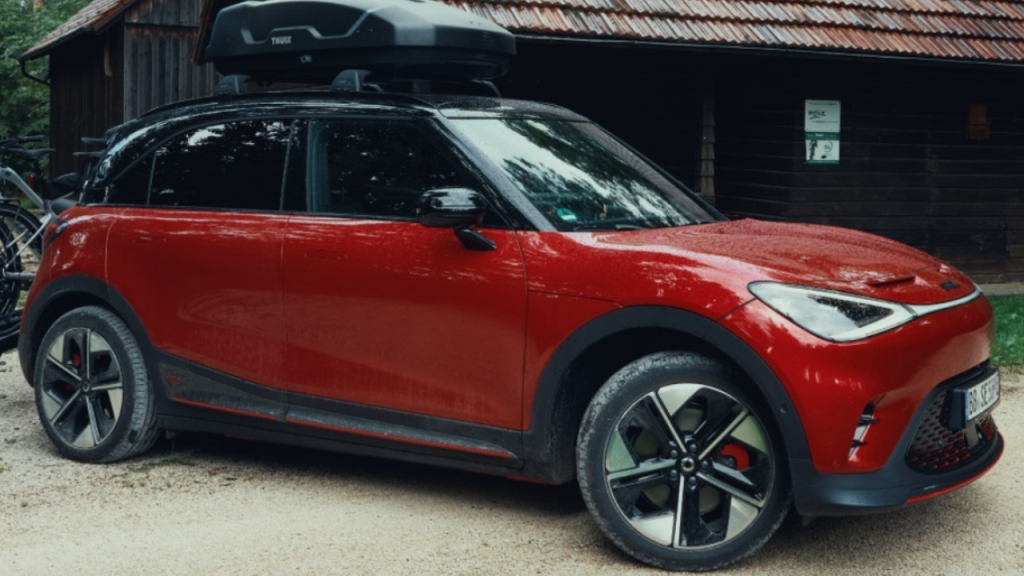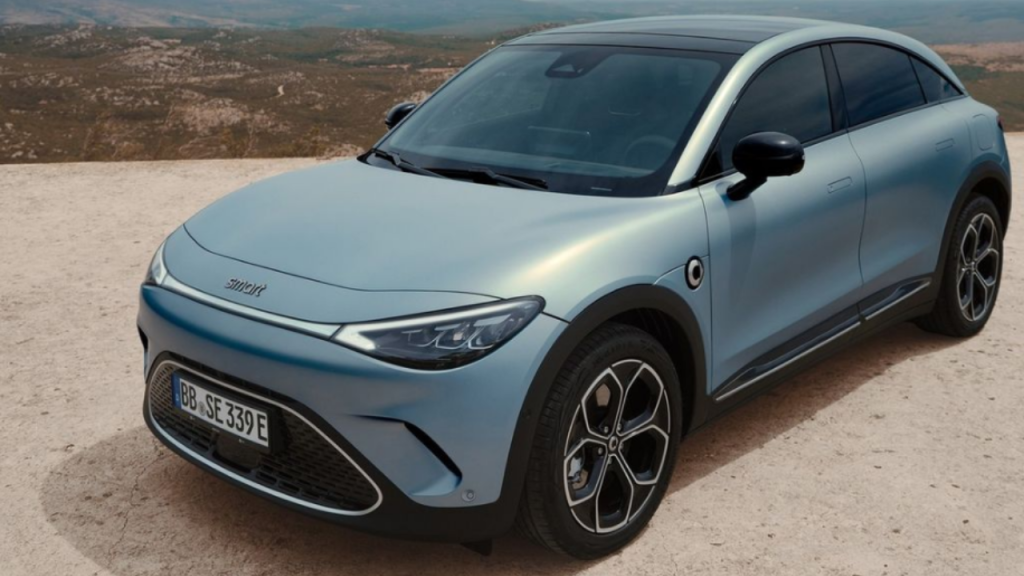‘Remember smart cars?’ I say, immediately scaring off most of our readers at the very thought of the rollerskate-sized road contraptions. Well, they’re coming back, with two catches – they’re electric, and they’re not so small now.
The new generation of smart cars, finally all-electric (though the Fortwo did get a brief electric run), will be distributed in Australia by LSH Auto Australia (a Mercedes-Benz distributor), under an agreement penned with both Mercedes-Benz and Geely, the joint owners of Smart Automotive Co. If the name Geely sounds familiar, that’s because it’s the company that owns Polestar and Volvo.
Rather than refreshing the Smart Fortwo, the Smart Roadster, or the Smart Forfour, Smart currently builds completely different cars. Following a restructure in 2019, when Mercedes-Benz sold 50 per cent of the company to Geely. All the cars are now built and designed in China, with models named #1 and #3 (both cars have four doors).

Both Smart #1 and #3 will come to Australia as distributed by LSH Auto, with appearances to be made in Sydney, Brisbane, and Melbourne showrooms that the distributor already operates. As for specs for both cars, Australia-specific details are to be revealed in June, with a website to launch next month – though it’s hard to imagine it will be much different from what’s currently available in Europe.
Per the UK website, The Smart #1 has a WLTP range of 440km on its Premium trim (and as low as 400km on its ‘Brabus’ trim, though Brabus adds AWD). The car can charge at 150kW on a public DC charger (130kW on cheaper models), with a 66kWh NCM Battery included in Premium and Brabus models (49kWh LFP on the cheaper options). The #1 is hatchback-shaped, with 313L of storage on offer (323L in entry-level options).
Meanwhile, the larger Smart #3 has a WLTP range of 455km on the Brabus/Premium trim (again, Brabus adds AWD), and 325km on the entry-level options. The car can charge at 150kW on a public DC charger (130kW on cheaper models), with a 66kWh NCM Battery included in Premium and Brabus models (49kWh LFP on the cheaper options). The #3 is crossover-shaped, with 370L of storage across all trims.

Pricing is to be announced, but we can look to the UK for indicative pricing:
- The Smart #1 starts at £31,950 in the UK but goes up to £43,450 for the AWD Brabus. Those numbers roughly convert to $61,396 and $83,390 in Australia.
- Meanwhile, the Smart #3 starts at £32,950 and goes up to £45,450 for the AWD Brabus. That’s about $63,250 and $87,200 in Australia.
Both cars are expected to launch in the third quarter of 2024.
“The addition of the smart EV range is a natural and exciting progression in offering customers the best premium motoring options across all available technologies,” LSH Auto Australia Managing Director John Good said.
“It’s clear that increasing numbers of Australians are drawn to the advantages of EV mobility. Entering a growing market with a premium product, presented by a premium partner, is the best possible outcome. We are confident the new smart range will connect with Australian EV needs, and that LSH Auto Australia will add a customer experience that will make the overall proposition extremely attractive,” Global Chief Marketing Officer for Smart Automobile Co, Mandy Zhang added.
Not to be a cheerleader for Smart cars, but they had humble roots. Originally envisioned by watch company Swatch CEO Nicolas Hayek as a sensible car of the future, Smart (a mix of Smart, Mercedes, and art) was just playing at a niche that didn’t exist – much less so in a market like Australia.
They were originally envisioned as electric, but technical limitations at the time led the company to go petrol. Big Car did a really good history of the company in his video on the Fortwo, the tiny signature car of the Smart company.
But the future has come, and it sure looks like Smart’s jumping on it – though at those prices, with that range, and with detailed specs to be revealed, it’s tough to say if it’ll be a real fighter against heavy-hitting EV brands down under like MG, BYD, and Tesla.
Image: Mercedes-Benz, Smart
